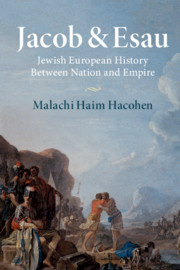Summary
Esau returned as a literary topos in Jewish national literature. Yiddish and Hebrew writers transcribed popular conceptions of Esau from rabbinic into ethnic idiom, and recreated the Goy, the quintessential non-Jew. With growing racialization, however, Esau’s ethnicity began to overwhelm his typological otherness. In the 1930s, he appears, in Itẓik Manger and Asher Barash, as a Jewish youth gone astray. Zionists demoted rabbinic Jacob as unheroic and “exilic.” Right-wing Zionist poet, Uri Ẓvi Greenberg, even explored a politics vested in Roman Esau. Only in German-Jewish literature, e.g., Beer-Hofmann and Lasker-Schüler, Jacob & Esau conveyed reconciliation and peace, staged against the reality of World War I.
Nazi racial myths sought a break with the biblical heritage. In response, Thomas Mann constructed, in Joseph and His Brothers, a countermyth, turning the Jewish patriarchs into oriental demi-gods, emblems of European culture. Like his Weimar Jewish compatriots, he disposed of typology. He used Midrash extensively, but dissolved it into oriental myth. His myth was no match to the Nazis. The Holocaust brought back Amaleq among traditional Jews but Galician Jewish writer, Soma Morgenstern, provided an alternative approach to Jewish-non-Jewish relations: He suggested a rapprochement between Orthodoxy and modern culture through the return of Esau's son home.
